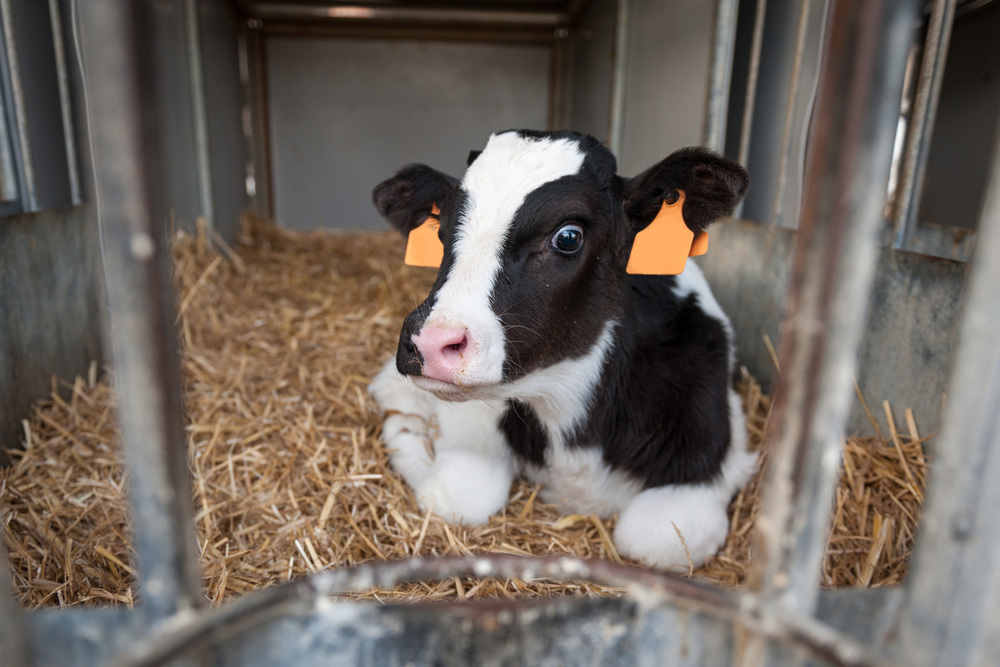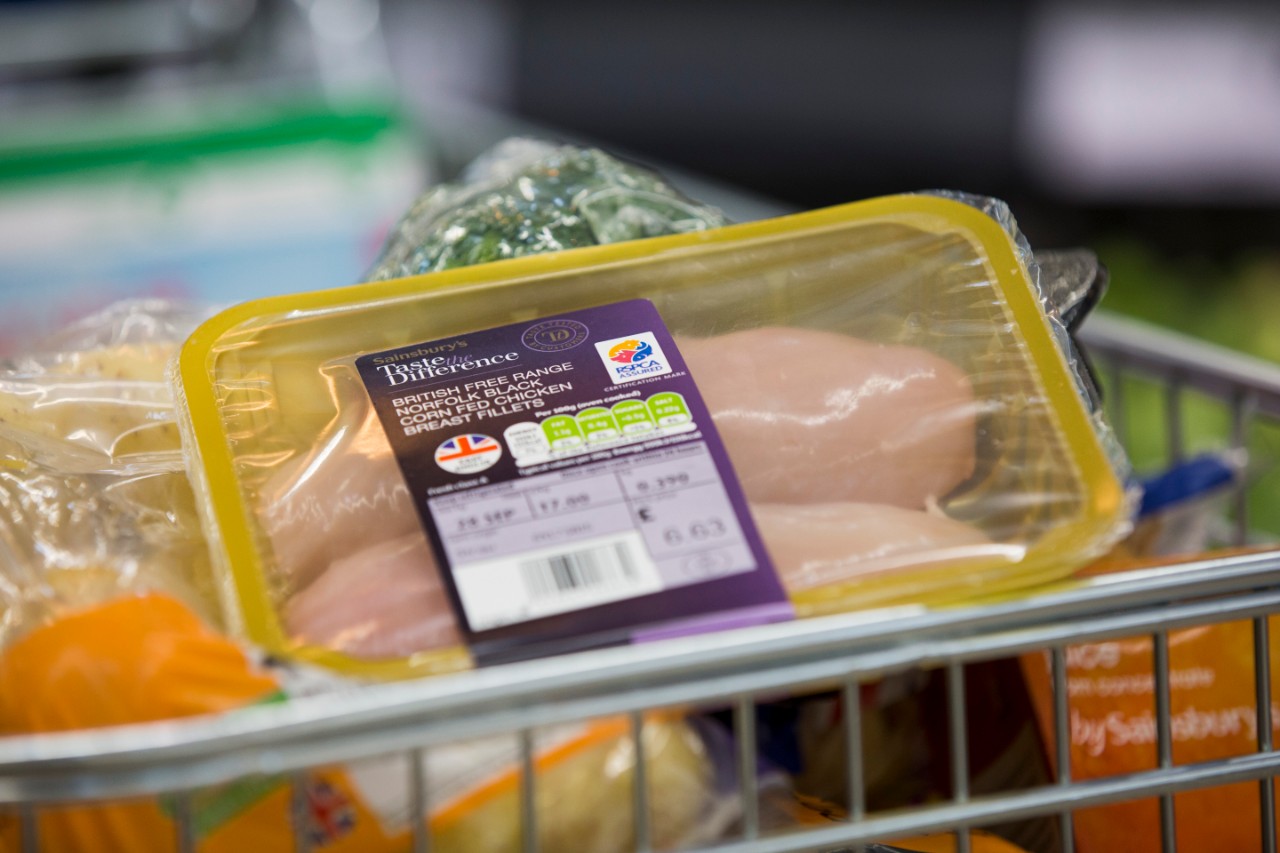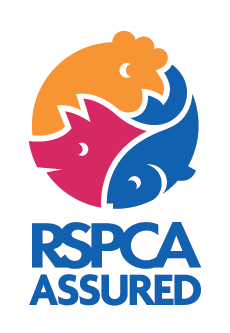Welfare issues for beef cattle
There are approximately 2.8 million cattle (steers, heifers, calves, cull cows and bulls) slaughtered for beef in the UK each year. Just over half of these animals come from the dairy herd (e.g. dairy breed cows producing a dairy beef crossbreed calf, and end-of-life dairy cows). The remaining animals (around 48%) are from the national beef herd.
Many people think that beef cattle do not face many welfare issues because they tend to see them kept outside in fields. However, this is not always the case, and many beef animals spend their final months inside for the “finishing period”, during which time they can be kept on unbedded, fully slatted floors, with little space to move, no enrichment and being fed a diet which can cause health issues.

Calf mortality
Mortality in the beef herd is highest in the first six months of life. Many calves will be suffering from similar conditions, but do not die, so the causes of mortality have much wider welfare implications. Estimates of young calf mortality in the beef herd range from 2.86-6.6%, with diarrhoea and respiratory diseases causing most of these deaths. Good husbandry, hygiene and ensuring calves receive enough good quality colostrum and sufficient milk until weaned are essential factors for successful calf rearing.
What do the RSPCA welfare standards say?
The RSPCA Welfare standards for calves require that all artificially reared calves are fed at least 8 litres of milk per day, and can’t be fully weaned until 8 weeks of age. They must be kept in well-ventilated, well-bedded barns or hutches. Long-acting pain relief must be provided if they are to be disbudded and/or castrated. Calves must be grouped within the first 3 weeks of life. All farms must have a veterinary health and welfare plan identifying illnesses present on farms and plans to actively reduce them through improvements in husbandry.
Housing of beef cattle
Beef farmers have very low profit margins, meaning some units are old and not suited for rearing beef cattle. Older systems often have inadequate ventilation and drainage, which increases the risk of respiratory diseases.
In suckler systems, cows are often kept outdoors during winter, and a lack of shelter can negatively affect their welfare.
For finishing cattle, some farms use fully slatted indoor systems, which require cattle to be kept at high stocking densities and often with a lack of enrichment. The use of straw-bedded yards offers better comfort; however, these often lack enrichment, and good management is required to avoid injuries and to prevent the cattle from becoming wet and dirty.
What the RSPCA welfare standards say
Cattle kept according to the RSPCA Welfare standards for beef cattle for beef sold with the RSPCA Assured logo cannot be kept in fully slatted systems; they have to be given more space than most other assurance schemes, and housed cattle must have access to environmental enrichment (such as brushes). Their housing must be well-ventilated and have a bedded lying area as well as an area of hard standing. All cattle must have access to pasture in their lifetime, and there must be sufficient access to shade and shelter, water and food to ensure positive welfare at pasture.

Health
Beef cattle experience a variety of health issues, from pneumonia and painful lameness to ruminal acidosis - a digestive condition caused by eating lots of carbohydrate-based/low fibre feed. The risk of some illnesses is higher when cattle are housed, for example, pneumonia spreading in crowded conditions, and a change of diet from grass at pasture to other feeds, when brought in for winter.
What the RSPCA standards say...
Farmers must have an annually reviewed veterinary health and welfare plan for their cattle, outlining how they monitor, treat and prevent common diseases, and a vet visit at least once a year. They must also have a nutrition plan, avoid sudden changes in diet, and feed fibrous food to prevent acidosis. Additionally, the standards require good ventilation for cattle during any housing period, helping prevent the spread of disease
Castration and disbudding
Disbudding:
Most cattle are born with horn buds which have the capacity to develop into mature horns, although some cattle breeds do not have horns (known as “polled breed”, e.g. the Aberdeen Angus). Young animals tend to be disbudded (removal of the horn buds) to prevent the development of horns, thus allowing easier management and decreasing the risk of injuries to herd mates or to the handler. Disbudding is usually performed by using a heated disbudding iron applied over the horn buds using a local anaesthetic. Currently, over 90% of UK herds are disbudded.
Legislation allows unqualified persons to disbud calves of any age provided they use an anaesthetic. Evidence shows that calves can experience pain from disbudding for several days after the procedure.
If calves are not disbudded, they often have to be dehorned before going to an abattoir or being mixed with unhorned animals they have not been reared with. This is a more stressful, longer and more invasive procedure, often with associated blood loss and risk of infection.
Castration:
Entire bulls tend to grow more quickly, resulting in leaner meat. However, they are more dangerous to handle once sexual maturity is reached and have to be split from the females, therefore, bull calves going to be reared for beef are usually castrated. Castration is mostly performed using physical methods, either surgically or by obstructing the blood supply to the testes and scrotum (using a rubber-ring method or the Burdizzo bloodless method).
These methods can lead to various health and welfare issues and can legally be performed by untrained staff, without any pain relief on animals under two months of age. The law requires that a local anaesthetic be applied to any animal being castrated over two months old. Some beef calves from the suckler herd are castrated at a much older age (around 9 months) - this carries a higher risk of heavy bleeding and infection.
What do the RSPCA standards say?
Cattle kept according to the RSPCA welfare standards for beef cattle producing beef sold with the RSPCA Assured logo must only be disbudded and castrated by a trained individual. Cattle can only be disbudded if under 5 weeks of age (earlier disbudding means a smaller wound and less stress for the animal), and they can only be castrated if under 2 months of age. If surgical castration is being used, it must be carried out by a veterinary surgeon with a local anaesthetic. All animals undergoing any of these procedures must be given long-acting pain relief.
Cattle cannot be dehorned under the standards except in exceptional circumstances.
More about beef cattle

What is veal?
Veal is meat from calves, usually the bull calves from dairy herds, since they cannot be used for milk production.

Lobby you supermarket
There is currently no commercially available RSPCA Assured beef but if it's something you'd like to see at your supermarket, let them know.

